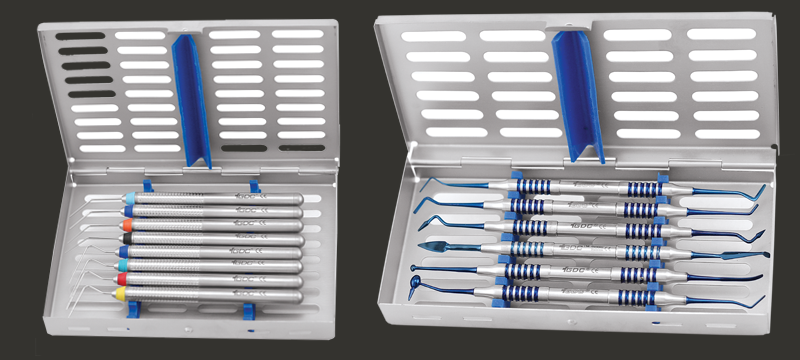
Table of Contents
Get Dental Catalogue PDF On Your Email
How to Reduce Supply Costs: Advice for Canadian Dental Practices
As the clinic manager at CarrotHCP, I work closely with dental practices across Canada, and one recurring concern I hear is this: “Our supply costs are out of control.” It’s a reality we’ve faced too and over the past year, I’ve helped our own operations navigate this challenge head-on. By focusing on how to reduce dental supply costs through smarter sourcing and supplier partnerships, we’ve managed to reduce overhead without compromising on care.
Even before US-Canada trade tensions hit, inflation and supply-chain snarls had driven prices up in dentistry, equipment and material costs have jumped nearly 20% since 2020. Suddenly, every syringe, implant and pair of gloves felt like a luxury. I remember looking at our expense reports and worrying, “Where can we cut costs without compromising care?”
Like many Canadian business owners, we began re-examining every part of our supply chain. (It reminded me of the story of a Calgary manufacturer who, faced with new tariffs, started “looking both closer to home and farther afield for manufacturers, suppliers and buyers”. Our practice’s waiting room in Toronto. We’re always looking for ways to make high-quality care more affordable for patients.
Managing Inventory and Budget to Reduce Dental Supply Costs
My first step was to get our inventory under control. We created a master supply list, tracking exactly what we use each month. As the Canadian Dental Association notes, “the first place you should look for savings is your inventory control system”. In practice, that meant doing things like grouping similar products, cutting out duplicates, and having one staff member manage orders. We set a clear budget for supplies. It’s recommended that inventory costs be around 5–6% of production. Any higher, and it’s a warning sign.
For example, we discovered we were overstocking patient bibs in four colors. By trimming back to just what we really use, we freed up hundreds of dollars in working capital. Over time, smarter inventory planning helped us reduce dental supply costs without cutting corners. I could actually point to each line item in our budget and know exactly where to save the next dollar.
Negotiating and Leveraging Buying Power
Next, I tackled supplier contracts. We called our distributors and reminded them they needed to “stay competitive on pricing”. In many cases, they were willing to match or beat offers, especially when we ordered in bulk. I also joined a local buying group for dentists. Through group purchasing, we negotiated volume discounts similar to what big chains get. Collective buying power (for example, through The Dentists Supply Company) can yield supply savings.
In fact, our practice became a TDSC member, where we could compare prices side-by-side and streamline orders. We also asked around: in Ontario there’s an Ontario buying network, and other provinces have similar programs. All these steps:renegotiating terms, ordering larger quantities, joining co-ops literally helped reduce dental supply costs and free up budget for other improvements. Every percent we saved on supplies went straight to our bottom line.
How Expanding Your Supplier Network Can Reduce Dental Supply Costs?
We realized we couldn’t depend on just one source for our dental supplies, especially with tariffs and supply chain disruptions looming. So, we made a conscious shift to diversify. Instead of relying solely on U.S. manufacturers, we began sourcing from trusted Canadian and international vendors. That’s when we turned to CarrotHCP, our own platform built to serve dental practices across Canada with affordable, high-quality instruments.

Our team was impressed as one of our assistants even joked, “as good as or better than big brand instruments and the only difference is cost”.” This move helped us significantly reduce dental supply costs while maintaining top quality.For specialized or hard-to-find items, we also explored vetted suppliers in Europe and Asia. This flexible approach has helped us stay resilient and cost-effective even when traditional suppliers raise prices.
Investing in Technology and Efficiency
Beyond purchasing tactics, we turned to efficiency and technology. Bringing some lab work and diagnostics in-house cut costs long-term. We added an in-office 3D printer and CAD/CAM scanner so we could make models, crowns and guides ourselves.In our hands, it meant fewer expensive lab bills and no rush shipping fees. We also embraced digital X-ray and diagnostic tools, which made workflows smoother.
The upfront costs were higher, but the reduction in outsourced fees and happier patients waiting less made it worthwhile. Even simple steps helped, for example, moving to a paperless record system eliminated the cost of charts and printer ink. Overall, the adoption of technology supported our mission to reduce dental supply costs and improve efficiency. All of this freed up staff time so we could do more with the same team.
Taking Action: Concrete Steps for Your Practice
From my experience, here’s what worked (and what I recommend other Canadian dentists do to slash supply costs):
- Audit and Budget Your Supplies. Track every item and set a strict budget (aim for supplies ~5–6% of revenue). Use a master list, like the CDA suggests, to avoid impulse orders.
- Negotiate with Suppliers. Don’t accept sticker price. Ask for bulk discounts or bundles. Remind your vendors to remain competitive. Explore group purchasing networks such as TDSC or provincial buying groups.
- Expand Your Supplier Pool. If a popular product is made only in the U.S., look for Canadian or other international alternatives. Consider local manufacturers with good reputations. Supplier diversity safeguards against tariffs and shipping hiccups.
- Adopt In-House Technology. Where possible, invest in equipment (digital scanners, 3D printers, chairside CAD/CAM) that reduces dependence on external labs. In our practice, doing more on-site directly “cut costs and turnaround times”
- Engage Your Team. Assign an inventory champion (such as a senior assistant) to review orders and cancellations each month. Engage your staff in finding cheaper alternatives,sometimes a hygienist finds a new supplier online. Every suggestion adds up.
By sharing these steps with my team at CarrotHCP, we’ve actually turned this challenge into a competitive advantage. We managed to reduce dental supply costs by over 10% within a year. It wasn’t easy, but as one business owner in Canada noted about today’s economy, this is the time for exploring new opportunities. And in dentistry, saving even a small percentage means better affordability for patients and a healthier practice overall.

